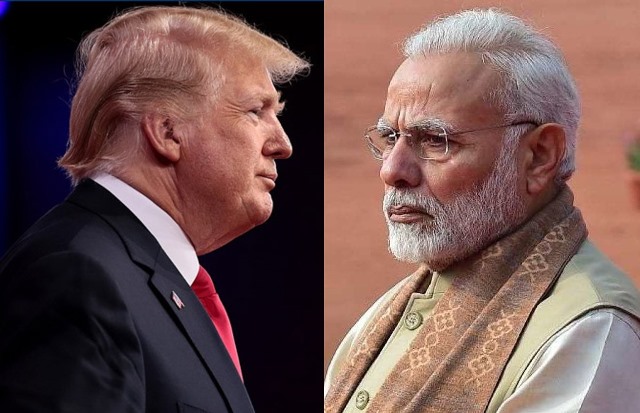India has come through many crises but the new Trump order levying a punishing 50% tariff on Indian goods, allegedly for buying Russian oil, may be one of the most complex challenges to India’s long pursued ‘strategic’ autonomy in international affairs. India is being asked to pick a side or suffer economic disaster from which it could take a long time to recover. Depending on Russia and China, this stress could go on for a long time.
As a regional rather than world power, India’s dexterity in balancing between different superpower camps is legendry. During the cold war, it led the Non Aligned Movement (NAM) giving immunity to many developing and underdeveloped countries from demands to join the American or Soviet camp.
India traded with USA and bought arms from the Soviet, now Russia. It relied on Russian veto at UN as well as support from Britain and USA. India’s diplomatic skills have been remarkable.
However, this time the threat to India’s is different. Donald Trump doesn’t do international politics by the book. Officially he has given India an ultimatum to stop buying cheap Russian oil, so that he can put pressure on Putin to negotiate peace in Ukraine. But the oil may just be a distraction.
There are other motives. He wants American companies to stop using India as a cheap manufacturing and IT base and bring the ‘jobs’ back to USA. Prime Minister Narendra Modi shifted from Manmohan Singh’s ‘made in India’ policy to ‘make in India’ inviting multinational companies to shift productions form China to India. It started working. Trump however promised his base to pursue a policy of onshoring.
Secondly, Trump wants the BRICS to end or at least be weakened. He sees the BRICS project to develop an alternative international reserve currency as a great threat to the Dollar and American hegemony. If India comes out of BRICS, it is likely to stop BRICS expanding. Some may even walk with India.
Thirdly, he wants to encircle China, USA’s biggest competitor in influence, power and trade. India’s ‘strategic’ neutrality frustrates USA. India is member of the defence pact, ‘QUAD’ (Australia, India, Japan and United States) but also of BRICS.
There is also a personal pique that might have led to Trump targeting India. For his alleged Noble Prize bid, Trump is trying to build a portfolio as a peace negotiator. He claimed to have stopped the India-Pakistan war in June 2025. India has denied any Trump influence.
Together, this has left Indian diplomacy and its government with one of the most testing times. On the one hand is its deep relationship with Russia as a reliable source for its defence needs and now cheap oil. Russia is thought to have persuaded China to back off from border incursions.
On the other hand is India’s growing engagement with United States as a geopolitical partner, particularly against China. Indian business ties with USA are growing. Most Indians dream of migrating to USA rather than Russia or China. Indians have done well in USA. As a democracy, it is considered to be an ideologically aligned to Democracies.
ALSO READ: Can Donald Trump Stonewall BRICS?
Trump has turned the heat on India to come off the fence or what India calls ‘strategic’ autonomy in international relations. The 50% Tariff threat will affect India’s economy substantially and could even force some businesses to fail, particularly in the textiles, garments, steel, gems and some auto-components fields. India’s trade with USA is a $212 Billion partnership. The USA is its biggest export market while India’s large market only features as tenth in America’s international trade.
Trump increased his coercive approach with collateral pressure. He invited Pakistan’s Army Chief, General (now Field Marshall) Asim Munir to lunch in June. He has shown interest in developing Pakistan’s mineral resources and oil. Pakistan is India’s birth enemy.
The second bee in the bonnet for Modi’s Government is the Khalistan issue which USA seems to be tacitly acknowledging. On 24th July, President Trump sent a signed letter to Gurpatwant Singh Pannu of the Sikhs for Justice.
The carefully crafted letter makes no reference to Khalistan or alleged threats to Pannu’s life from Indian agents but it cites America’s intention to make its farmers competitive in a level playing field. This was an indication for India to reduce subsidies to its farmers and stop import tariffs on American agriculture produce. The policy will ironically affect Punjab’s Sikh farmers the most. The letter itself is a message to India, that US could support the Khalistan movement.
India’s has decided to sit it through, keep its head down, continue trade negotiations, reduce tariffs on some US imports, reduce the trade deficit and wait for Trump-Putin talks to diffuse Trump’s frustration at the grinding Russia-Ukraine war that he was supposed to end within 24 hours of taking office. Putin will have India’s predicament in mind when he meets Trump.
It is also not in China’s interest to see India’s economy faltering and India moving closer into the American orbit. BRICS is China’s counter force to American hegemony. But India too needs the BRICS to maintain ‘strategic’ autonomy.
India has one asset that Trump’s USA does not. The United States has largely interacted in the international world through might, ideological hegemony, financial strength and interventions. It is not quite used to coexistence or delicate diplomacy. It makes exceptions as ‘pragmatic’ suspension but hopes things will change in its favour one day.
India on the other hand came from a very weak hand after decolonisation. It has learnt to balance its interests with geopolitical trends but also keep a foot in most camps. It has a leading role in the Commonwealth, a powerful player at UN, a good friend of many African countries, good relations with most South East Asian countries, member of BRICS and Quad and immense respect in the Middle East where it supplies cheap labour and goods.
Modi has a lot to lose if he cowers to Trump’s demands. India’s prestige in the world will be greatly affected. Countries will see it as weak. Modi himself will start to lose the strong man image in India and the world.
At the same time many powerful Indian businesses will try and persuade Modi to compromise with Trump since many are dependent on trade with USA. However India has the financial reserve to placate them.
Trump has many cards to play, a word he likes in the game of deal making. Warnings by experts that India will go into China’s camp are unfounded.
This is going to be a long drawn issue as it is not merely about the Russian oil. India is walking on burning coals as its foreign policy competence is tested to its limits. If it comes out of this with its integrity, its influence in the world will increase. If it compromises, that influence will decrease.


